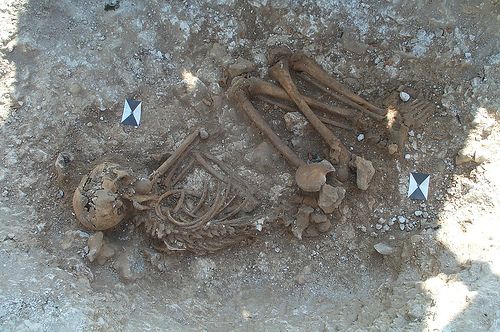Recent research by the British Geological Survey suggests that in the Early Bronze Age people may have come from the heat of the Mediterranean to visit Stonehenge.
Professor Jane Evans, Head of Archaeological Science at the British Geological Survey, said that recent scientific analyses of the teeth of a teenager buried at Boscombe Down suggest that he ‘spent his childhood in a warm climate typical of Iberia or the Mediterranean. Such warm oxygen values are theoretically possible in the British Isles but are only found on the extreme west coast of south west England, western Ireland and the Outer Hebrides. These areas can be excluded as likely childhood origins of his on the basis of the strontium isotope composition of his teeth.’
The grave was found next to a Bronze Age barrow at Boscombe Down, Amesbury, during road improvements. The burial has been radiocarbon dated to about 1550 BC and is of a 14-15 year old, who is thought to have been male. The only object buried with them was a necklace made from up to 90 tiny amber beads. The amber may have been brought to Wessex from the Baltic, perhaps Denmark, as lumps of raw material before being turned into the tiny beads.
Professor Evans was speaking ahead of a one-day science symposium being held at the Royal Institution in London on September 28th to celebrate to 175 years of the British Geological Survey. The BGS is the world’s oldest national geological survey.
In the Media
Professor Jane Evans and Dr Andrew Fitpatrick were interviewed for BBC Radio 4's Today show on 29th September 2010. Listen to the interview (available for 7 days).
The story has also featured on the Mail Online. Read the article here.


